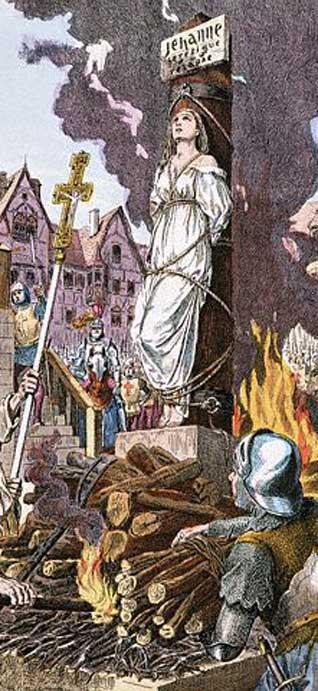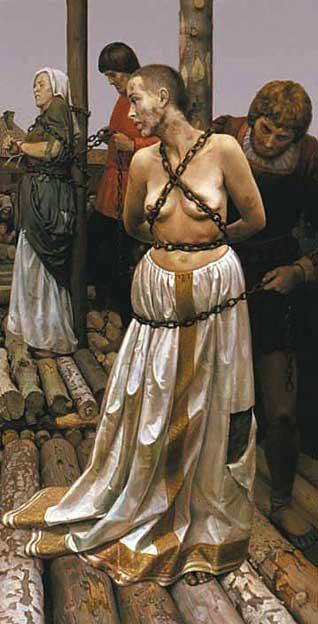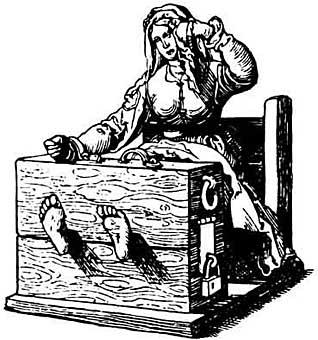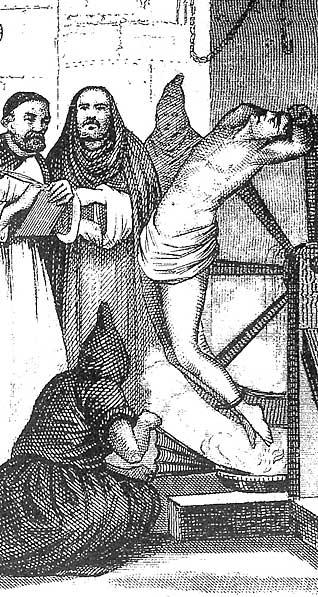Columnists
The How and Why of Heresy
by I.J. SINGH & RAVINDER SINGH
An advertisement in a leading Indian daily placed by the Haryana, India-based Dera Sacha Sauda organization has Sikhs across the world incensed, because it depicts their leader - who goes by the rather interesting name of Gurmeet Ram Rahim Singh - doing a Guru Gobind Singh impersonation. He apes the Guru by dressing like him and tries to appear as if he is the Guru, by attempting to recreate Guru Gobind Singh's greatest achievement - the creation of the Khalsa in 1699.
Artistic renditions of Guru Gobind Singh at this most pivotal moment show him dressed like royalty of the times: a round turban with a plume or kalgi, a cummerbund (kamar kassa), carrying a silver arrow, stirring the Amrit with a double-edged sword (Khanda). Such artistic images are perhaps the most powerful symbols that inform the Sikh psyche.
The similarity of the advertisement with the rendition of Guru Gobind Singh as Sikhs know it, is unmistakable. And so is the intent. Clearly, Gurmeet Ram seeks to recast himself in the image of Guru Gobind Singh, and project himself as a prophet of the times - his public denial notwithstanding.
In this sense, Gurmeet Ram is neither unique nor the first to misappropriate the message and symbols of an established religion for his own limited, perhaps pernicious use.
Sikhi has had its share of pretenders and Gurmeet Ram is just the latest in a line that dates back to Prithi Chand, Meharban, Ram Rai, and in more recent times, the Radha Soamis and the Nirankaris.
This is heresy. Sikhs rightly view this as extreme provocation, and judging from the hackles Gurmeet Ram has raised, it is obvious that they are not going to put up with it. Not surprisingly, there have been demands for Gurmeet Ram's head, and talk about suicide squads.
Unfortunately, such reaction is unlikely to solve anything except make matters worse. Recourse to the bullet simply means that we have lost the debate.
It used to be that religions could - and did - deal with such acts summarily; thus, a Christian heretic would be burnt at the stake and low-caste Hindus had molten lead poured into their ears for daring to hear scripture.
But we now live in different times. Religions no longer enjoy the same kind of temporal authority over their followers. The best one can hope for these days is eternal damnation for such provocateurs.
Now the question is: what is one to do? What next?
For starters, we need to find a better and more productive expression for our frustration than what we have seen so far. The reaction - or over-reaction - of the hierarchy of our Jathedars has provided us an unexcelled example of a knee-jerk reaction that is no better than making empty slogans, threatening physical violence and demanding apologies. Calls for Gurmeet Ram's head are being made in some quarters, and news items suggest actions aimed at forcibly closing down the Dera ("Centre").
Now that Sikhs worldwide have vented their frustration, what real options do they have?
Our actions can be either curative or punitive. Available punitive actions are few but, nevertheless, they need to be exercised. An apology was quite rightly demanded, although one has yet to be received.
Legal action has also been filed under Section 529 (of the Indian Penal Code) and moral pressure in the form of a social boycott of Sacha Sauda members has been called for. This is the right kind of punitive pressure to apply.
But the Jathedars have, in their wisdom, also issued an edict, demanding closure of all the Deras. This is not feasible legally, repugnant morally and certain to diminish support for us. Even if such a result were desired, it would require a long-term strategy of patience, education and social pressure. We need to develop ways to undermine and undercut whatever service the Deras provide that their followers find attractive.
No Sikh leader has condemned the call for Gurmeet Ram's head. His killing would only transform him into a martyr, and would serve no useful purpose. The sight of Sikhs brandishing swords and talking about suicide squads does not serve them well. It merely reinforces their image - well cultivated to date by vested interests - as a violent bunch who cannot settle their internal differences peacefully.
Beyond this, there are curative actions that Sikhs need to reflect on.
An obvious question that is being asked revolves around the appeal and proliferation of the Deras in Punjab. At last count, there were over 9000 Deras in the Punjab that commanded a substantial following. Dera Sacha Sauda alone has more than 500,000 followers, drawn largely from Dalit Sikhs and other marginalized Hindus and Muslims. The composition of the organization points to what may be a reason why Sacha Sauda is attracting so many followers.
Some serious introspection is in order for the community at large. Does our leadership have a vision or will it continue to display the kind of knee-jerk reaction that it has shown to date? There will always be "sects" or "movements" at the periphery of major religions and Sikhi is not immune from this. But we need to devise a more balanced, circumspect reaction to the presence of these organizations.
In a real sense, this crisis presents an opportunity for our leadership to demonstrate moral authority and to clean house by arresting some of the obviously pernicious tendencies within the Panth, i.e., the drift towards shedding of the 5K's, use of drugs, foeticide, female infanticide, gender inequality, caste, etc. These demand long-term initiatives, but if undertaken with the right spirit, will, over time, diminish the attraction of Deras like Sacha Sauda.
Every new message that aims to take on the mantle of a movement, is, at its core, one of rebellion, and is so perceived by others. Therefore, by definition, such a new message has to be cast in the language of the old. As a result, the cultural context becomes complicated, and every new messenger becomes an iconoclast.
That's why we remember the lives of Socrates, Buddha, Jesus, Nanak and his successor Gurus. But with time, they have become icons, leading to newer iconoclasts. However, history has proven beyond doubt that their message is timeless. And the danger to their message is less from newly discovered self-proclaimed messengers, than from distortions of their message by their so-called followers. And this is clearly evident in the distortion of the Sikh message by Deras like Sacha Sauda.
It would seem from the above that we do not approve of government-sanctioned censorship, and that is generally true. Freedom of speech is indeed sacrosanct. But it is also true that there are limits to free speech, if the greater good demands it. A simple example: no one has a right to yell "Fire!" in a crowded theater.
This is not to underestimate the evil of "politics as usual" that seems to be at work here. It is worth noting that Dera Sacha Sauda supported the Congress Party in the recent elections and helped it win an unprecedented 37 out of 65 seats in the Malwa region. The similarity of this Dera's activities with the happenings that led to the 1978 Sikh-Nirankari clash is unmistakable, and many rightly fear that history might repeat itself.
The course of recent events in Punjab suggests that hard-core elements are fishing in troubled waters. If they haven't fomented it, surely politicians stand at the brink like vultures to take advantage of this crisis, at incalculable cost to the community.
As is sometimes said, some diseases are manageable, while others are curable. This disease of the Deras is one that is neither easily curable nor simply manageable. It demands of us a level head in sehaj, guided by the wisdom and patience of the Guru.
[Images on this page illustrate that various societies, at different times, have grappled with what they perceived as heresy: France, Germany, the U.S. and Spain, for example.]
Conversation about this article
1: Jagdeep Singh (London, England), May 24, 2007, 9:56 PM.
Thank you for writing this important and excellent article. Your voice is a vital one at this moment.
2: Roopinder Bains (Surrey, British Columbia, Canada), May 25, 2007, 5:02 PM.
Great article. I am reminded of Baba Bakala and the 22 pretender gurus - the real Guru remained quiet, and Makhan Shah Lobhana revealed the truth.






